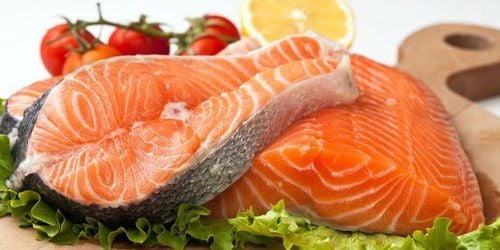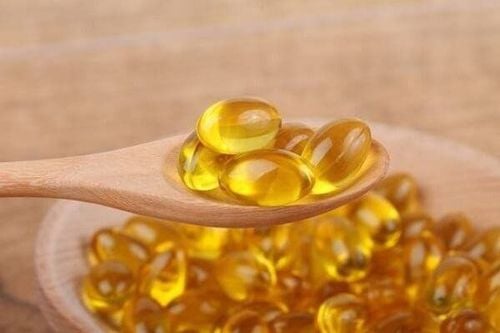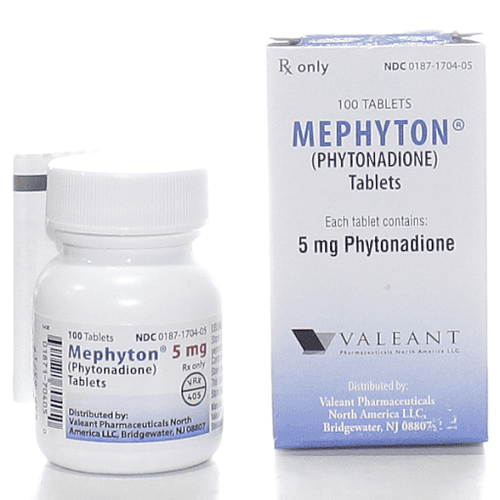This is an automatically translated article.
The article was professionally consulted by Specialist Doctor II Ho Viet Le Diem - General Internal Medicine - Department of Examination & Internal Medicine - Vinmec Central Park International General Hospital.Omega 3 fatty acids provide many benefits for the body and brain. The World Health Organization recommends a minimum of 250-500mg Omega 3 per day for adults.
1. Mackerel (4107 mg/serving)
In Western countries, mackerel is usually smoked and filleted whole for breakfast. Mackerel is rich in nutrients, a 100g piece of mackerel provides up to 200% of vitamin B12 and 100% of selenium needed for a day. What's more, this fish is really delicious and requires little preparation.Omega 3 content in mackerel: 4,107 mg in one piece or 100g of mackerel contains 5,134mg Omega 3.
2. Salmon (4023 mg/serving)
Salmon contains a high protein content and includes many nutrients such as magnesium, potassium, selenium, and B vitamins. Studies have shown that people who regularly eat salmon have a reduced risk of diseases such as cardiovascular disease, loss of weight, and heart disease. mental illness or depression...Omega 3 content in salmon: half a fillet contains 4023 mg Omega 3 or 100g salmon contains 2260 mg Omega 3.
Trắc nghiệm: Muối trong thực phẩm, natri, huyết áp và sức khỏe của bạn
Muối, natri là chất khoáng cần thiết cho cơ thể để duy trì hoạt động ổn định. Tuy nhiên, chế độ ăn thừa muối có nguy cơ cao dẫn tới các vấn đề sức khỏe nghiêm trọng. Cùng làm bài trắc nghiệm sau đây để hiểu hơn về những ảnh hưởng của các khoáng chất này tới huyết áp và sức khỏe bạn thế nào nhé.
Nguồn tham khảo: webmd.com
3. Cod liver oil (2664 mg/serving)
Cod liver oil is considered a functional food rather than a food. It is extracted from cod liver. This oil is not only rich in Omega 3 fatty acids, but also contains vitamin D (339% RDIs) and vitamin A (270% RDIs).1 tablespoon of cod liver oil will meet the need for 3 nutrients that are extremely important for health. Therefore, do not use more than 1 tablespoon of cod liver oil because too much vitamin A will harm your body.
Omega 3 content in cod liver oil: 2664 mg/per tablespoon.
4. Herring (3181 mg/serving)
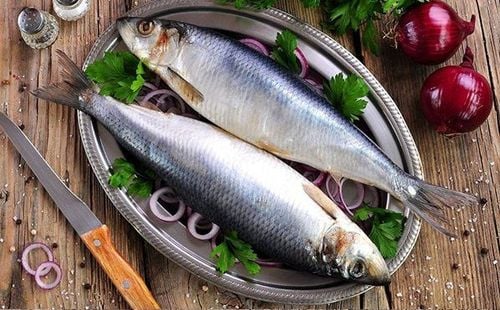
One standard herring fillet contains almost 100% of the RDI of vitamin D and selenium, and 50% of the RDI of vitamin B12.
Omega 3 content: Each fillet of herring contains 3181 mg of Omega 3 or 100g of herring contains 1729 mg of Omega 3.
5. Oysters (565 mg/serving)
Crustaceans are one of the nutritious foods. In fact, oysters contain more zinc than any other food. With 6 raw oysters (100g oysters) contains 600% RDI zinc, 200% RDI copper, 300% RDI vitamin B12.Oysters are often used as an appetizer, snack or can be used as a main dish. In many countries, raw oysters are considered a delicacy.
Omega 3 content: 565mg Omega 3 in 6 raw oysters or 100g raw oyster contains 672 mg Omega 3.
6. Sardines (2205 mg/serving)
Sardines are a type of small fish. They are often served as an appetizer or snack. Sardines are very nutritious, especially when eaten whole. Sardines contain most of the nutrients we need.One cup of dried sardines (149 g) provides more than 200% of the RDI of vitamin B12, 100% of vitamin D and selenium.
Omega 3 content: 100g of sardines contains 1480 mg of Omega 3.
7. Anchovies (951 mg/serving)
Anchovies are a type of small fish, they are usually dried and canned. Anchovies are often eaten in very small portions, such as used to roll, stuff with olives or make pizza, put on salads.Anchovies are an excellent source of vitamin B3 and selenium, in addition, the bones of anchovies are rich in calcium.
Omega 3 content: 100g of anchovies contains 2113 mg of Omega 3.
8. Caviar (1086 mg/serving)
Caviar is considered a luxury food, they are eaten in small amounts as appetizers.Caviar contains a lot of choline and especially Omega 6 fatty acids.
Omega 3 content: 100g of caviar contains 6789 mg of Omega 3.
9. Flaxseed (2338 mg/serving)
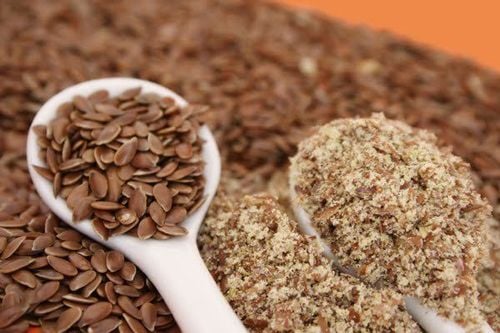
Of the foods rich in Omega 3 fatty acids, this is the food that contains the most alpha linolenic acid (ALA).
In addition, flaxseed oil is also used as an omega 3 supplement.
Flaxseed contains a lot of fiber, vitamin E, magnesium and other nutrients. In flaxseed, the ratio of Omega 3 to Omega 6 is quite balanced compared to other oilseeds.
Omega 3 content in flaxseed: 1 tablespoon of flaxseed contains 2338 mg of Omega 3, 1 tablespoon of flaxseed oil contains 7196 mg of Omega 3.
10. Chia seeds (4915 mg/serving)
Chia seeds are extremely nutritious seeds. Chia seeds are rich in manganese, calcium, phosphorus and other nutrients.A standard serving of chia seeds (28g) provides 4g of protein and 8 essential amino acids for the body.
Omega 3 content in chia seeds: 28g contains 4915 mg of Omega 3.
11. Walnuts (2542 mg/serving)
Walnuts are very nutritious and contain a lot of fiber.Walnuts also contain large amounts of copper, manganese, vitamin E and important plant compounds.
Walnut shells should not be discarded because they contain antioxidants.
Omega 3 content in walnuts: 28g (7 walnuts) contains 2542 mg Omega 3.
12. Soybeans (1241 mg/serving)
Soybeans are a rich source of dietary fiber and plant protein.Soybeans also contain various nutrients such as vitamin B2, vitamin K, folate, magnesium and potassium.
Soybeans contain very high levels of Omega 6, so soy should not be relied on as a sole Omega 3 supplement. There should be a balance between Omega 3 and Omega 6.
Omega 3 content in soybeans: 100g of soybeans contains 1443 mg of Omega 3.
Omega 3 can be supplemented from daily food sources. Omega 3 brings many benefits to the body, but should not be overused. To get the best health, should only be used in moderation and reasonable.
Please dial HOTLINE for more information or register for an appointment HERE. Download MyVinmec app to make appointments faster and to manage your bookings easily.
Article referenced source: Healthline.com





